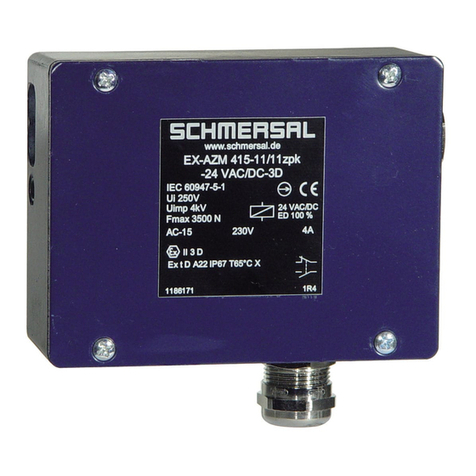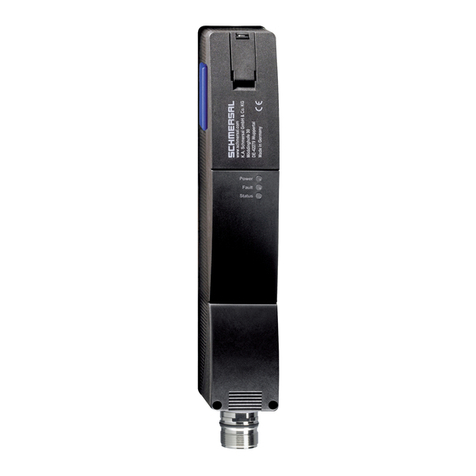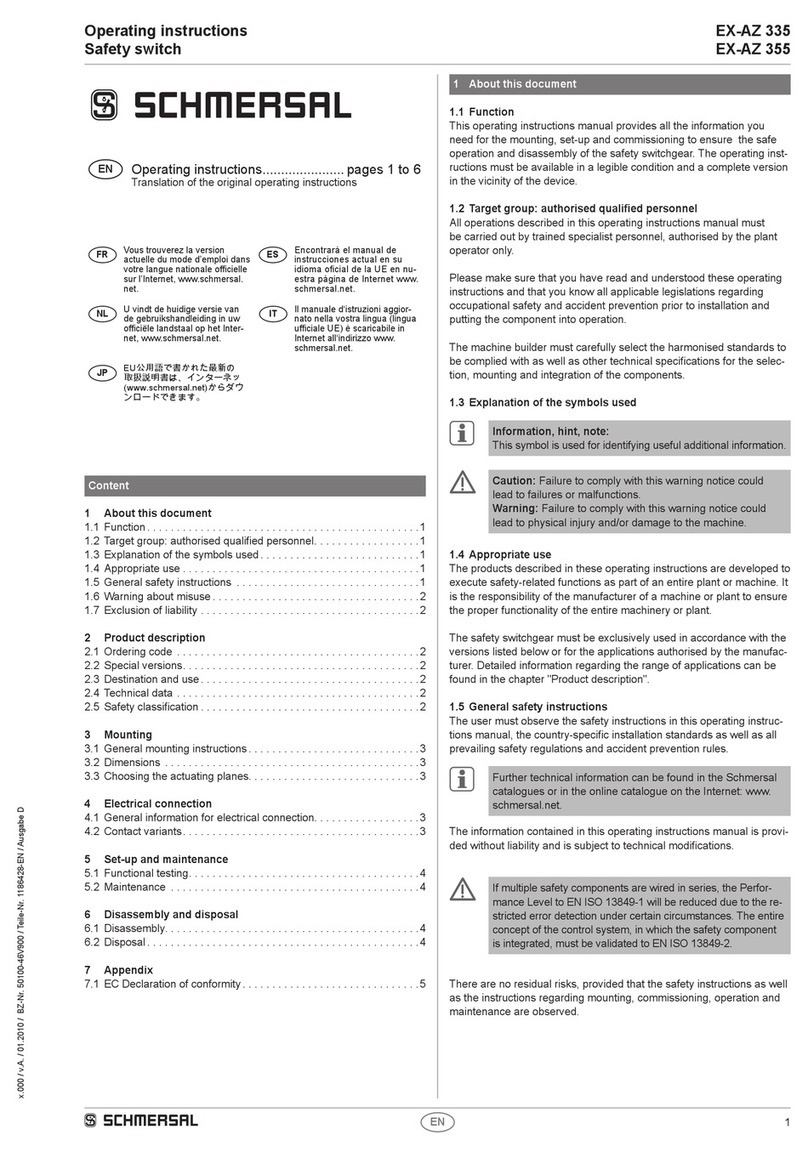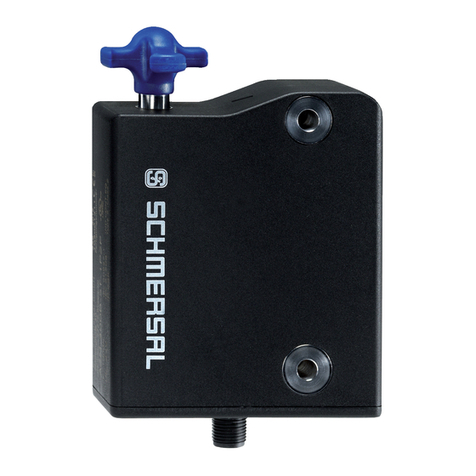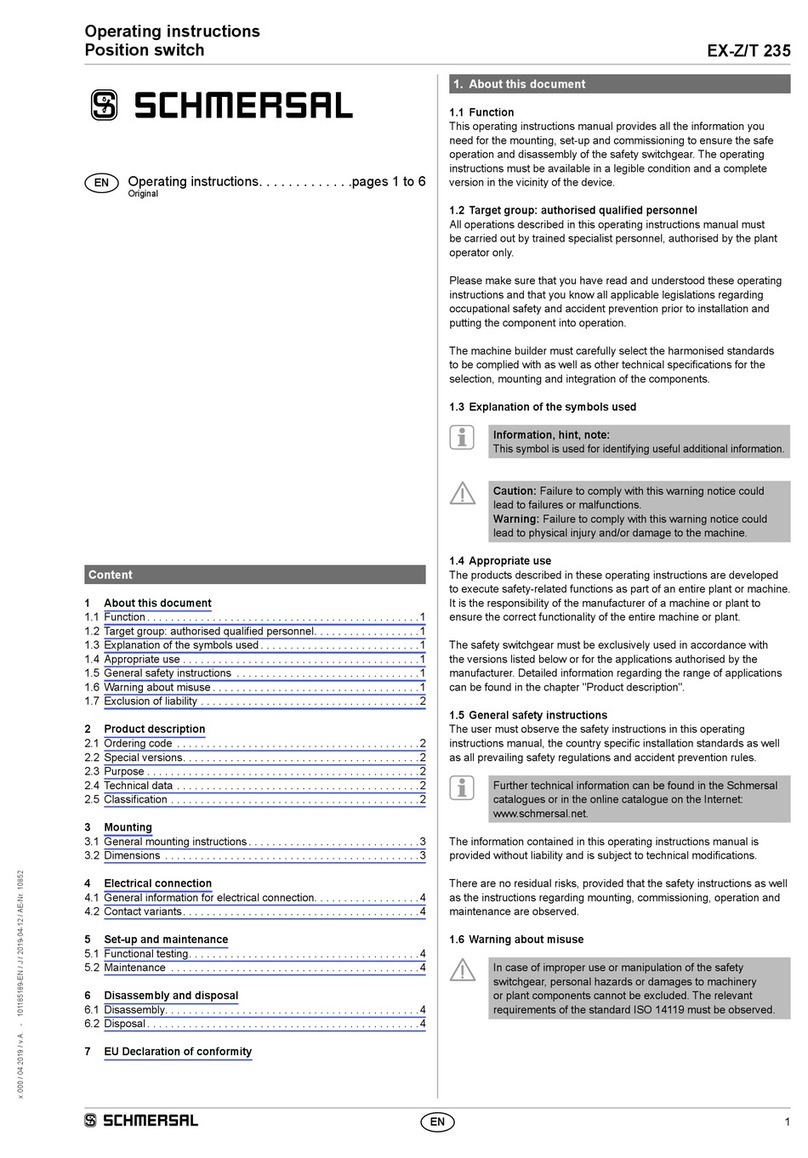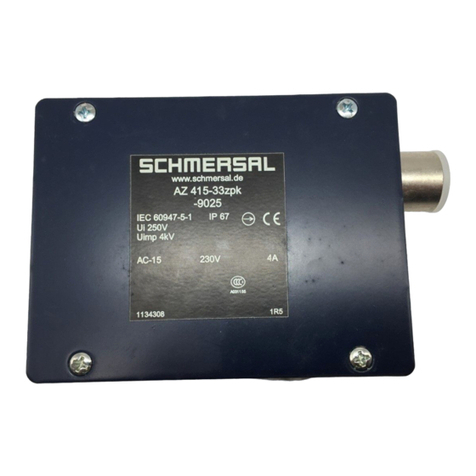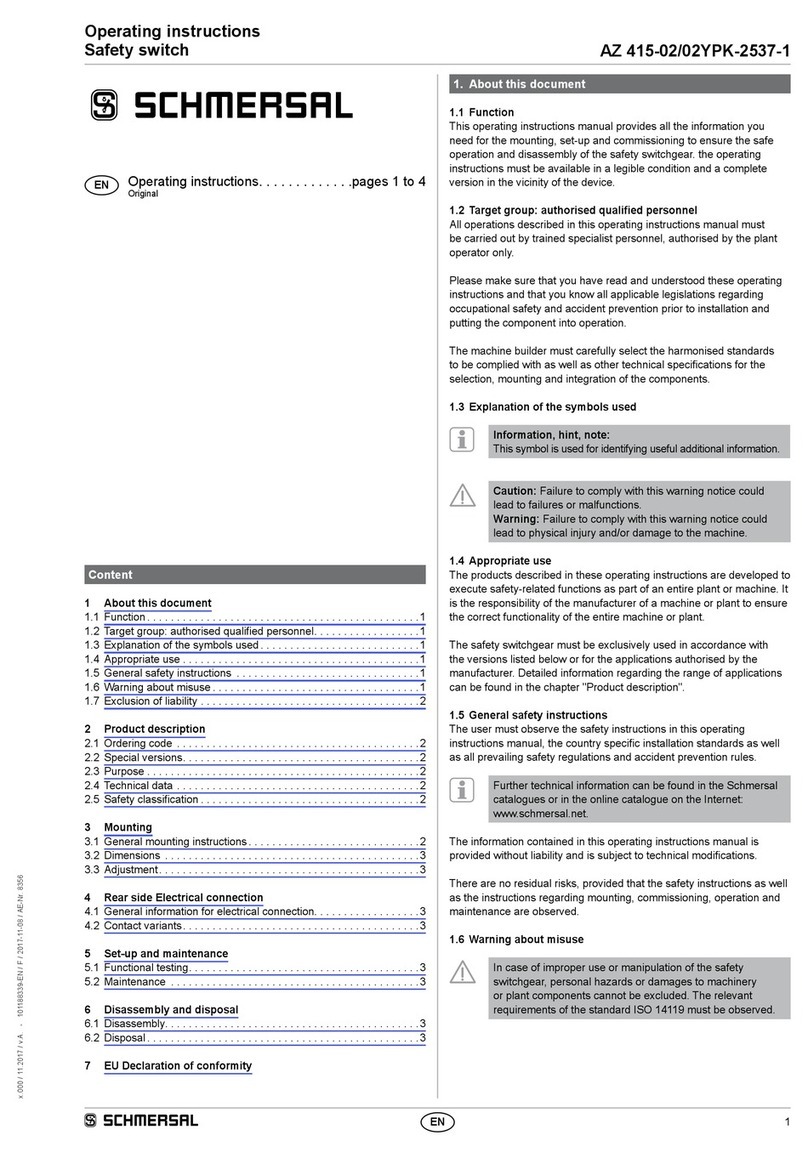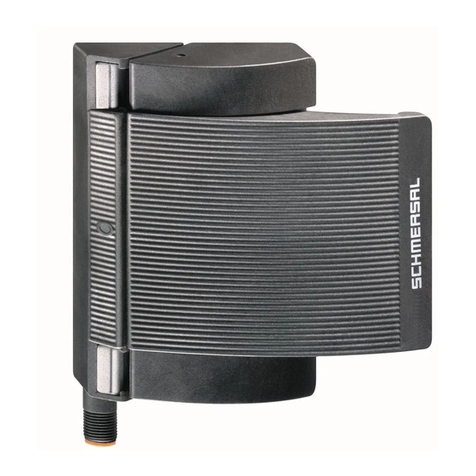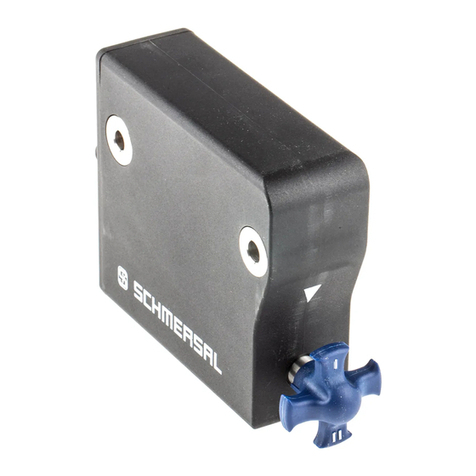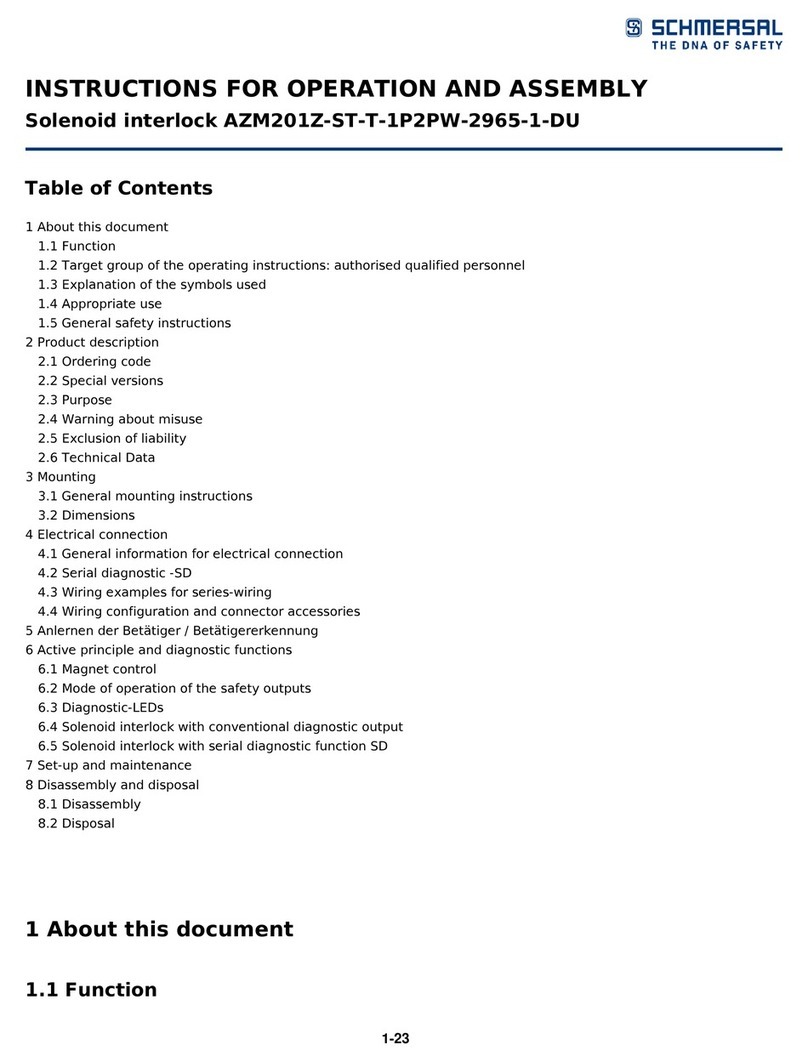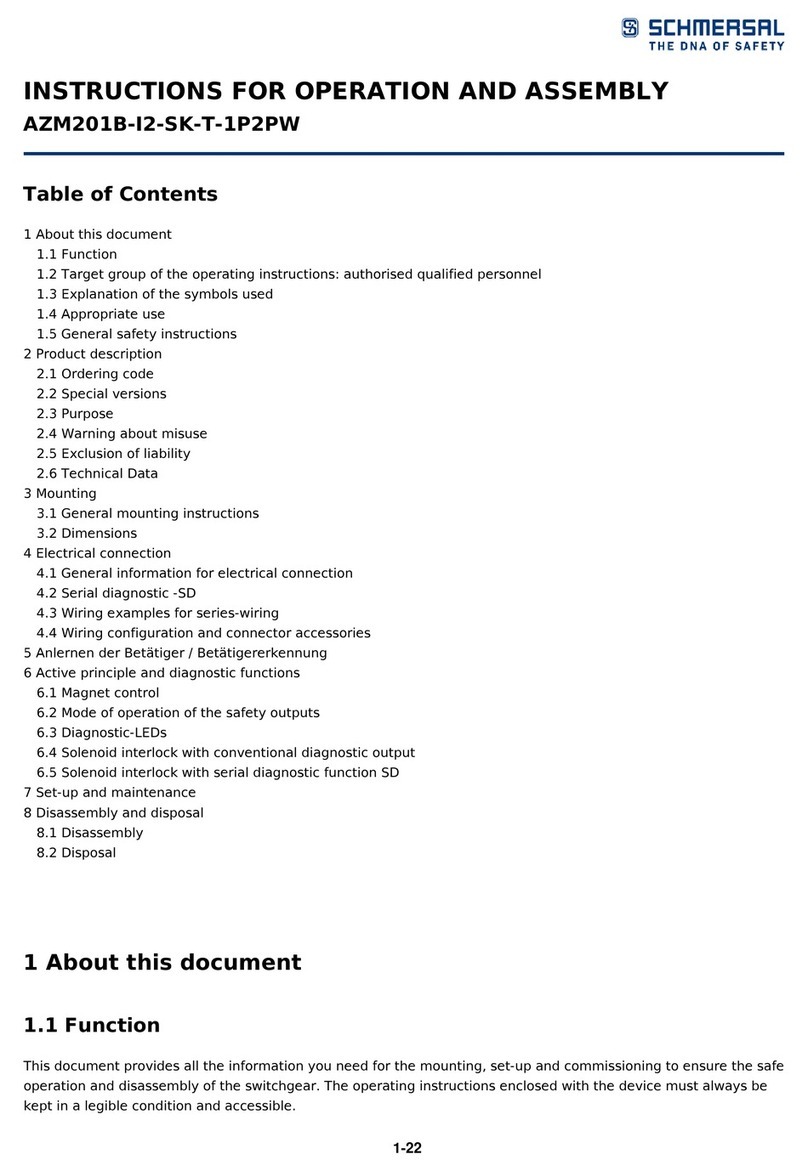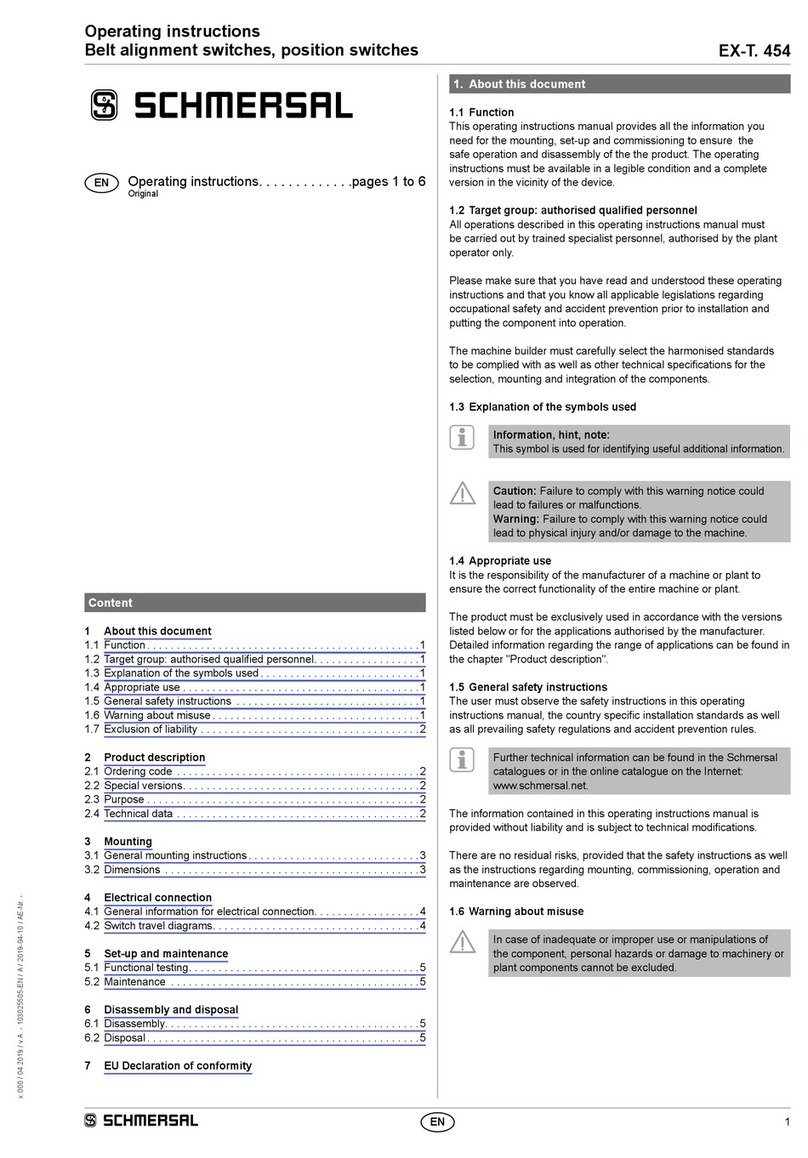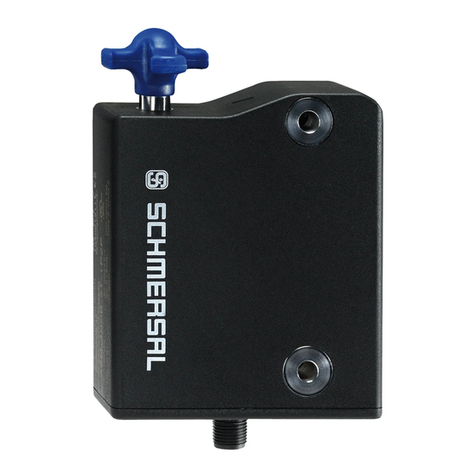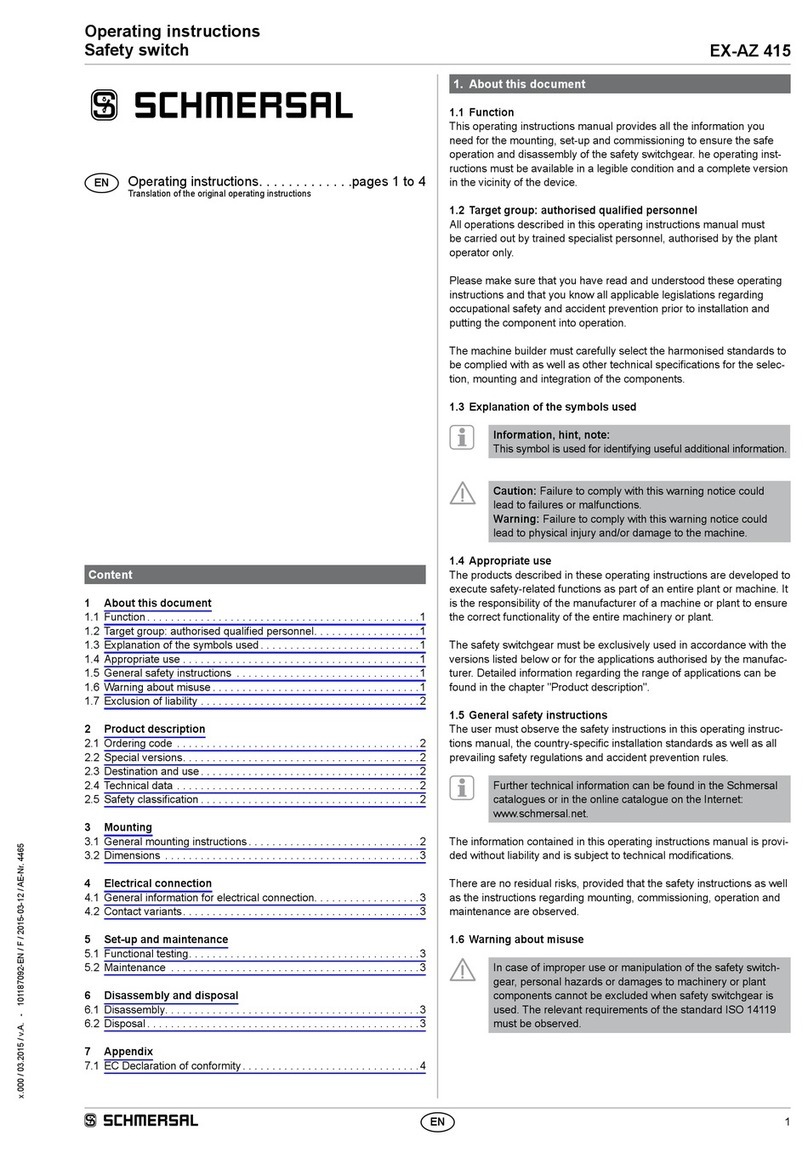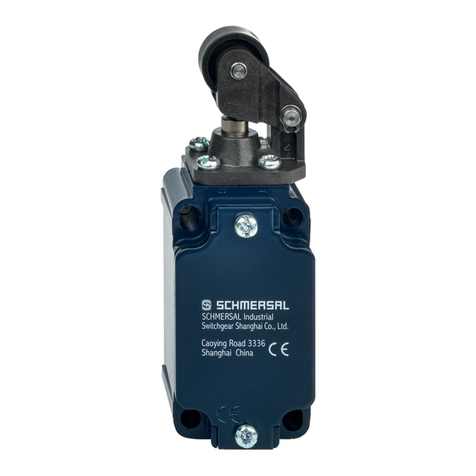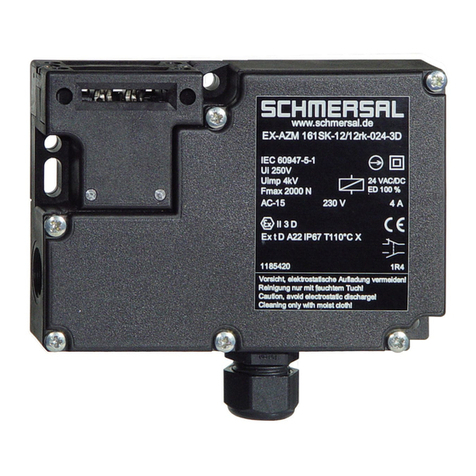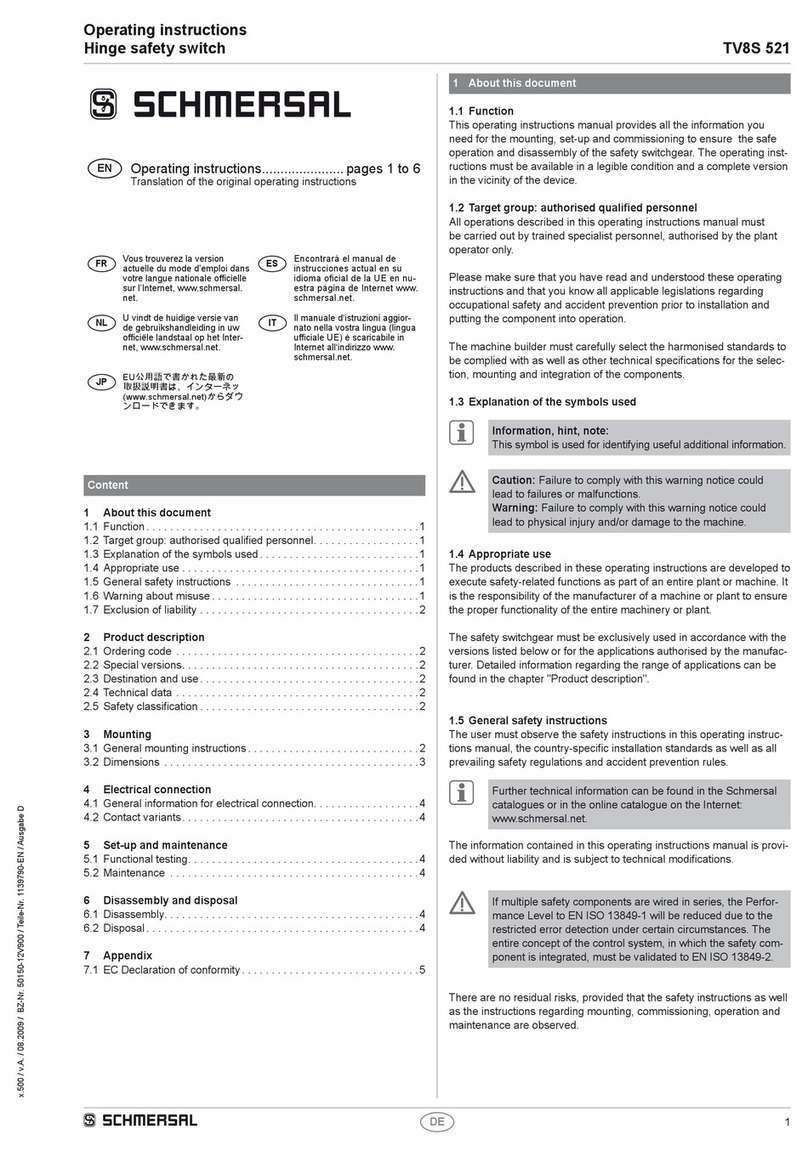2
Operating instructions
Enabling switches ZSD1/ZSD2/ZSD4
EN
1.7 Exclusion of liability
We shall accept no liability for damages and malfunctions resulting from
defective mounting or failure to comply with this operating instructions
manual. The manufacturer shall accept no liability for damages resulting
from the use of unauthorised spare parts or accessories.
For safety reasons, invasive work on the device as well as arbitrary re-
pairs, conversions and modifications to the device are strictly forbidden;
the manufacturer shall accept no liability for damages resulting from
such invasive work, arbitrary repairs, conversions and/or modifications
to the device.
2. Product description
2.1 Ordering code
This operating instructions manual applies to the following types:
ZSD
➀➁➂➃➄➅
No. Option Description
➀
1.1LC Pilot 10 enclosure with HE3B-M2P 3-stage
enabling switch (1NC/1NO) with 5 m cable
➁
1LC/TZG Pilot 10 enclosure with HE3B-M2PY 3-stage
enabling switch (1 NC/1 NO contact) with TZG
(1 NC/1 NO contact or 2 NC contacts)
+ TZ/CO actuator, with 5 m cable
➂
2.1LC Pilot 20 enclosure with HE3B-M2PY 3-stage
enabling switch and 2 additional pushbuttons
(1 NO contact each) without cable
➃
2.1LC/
TZG..
Pilot 20 enclosure with HE3B-M2PY 3-stage
enabling switch and 2 additional pushbuttons
(1 NO contact each), additionally with TZG
(1 NC/1 NO contact or 2 NC contacts)
and TZ/CO actuator, without cable
➄
4/TZG.. Pilot 20 enclosure with 2-stage enabling switch,
1 emergency stop and 1 pushbutton (1 NO contact)
with TZG (1 NC/1 NO contact or 2 NC contacts)
and TZ/CO actuator, without cable
➅
4.1 Pilot 20 enclosure with 2-stage enabling switch,
1 emergency stop and 1 pushbutton (1 NO contact)
with TZG (1 NC/1 NO contact or 2 NC contacts)
and TZ/CO actuator, without TZG / TZ/CO,
without cable
Not all component variants, which are possible according to this order
code, are available.
Only if the information described in this operating instructions
manual are realised correctly, the safety function and therefore
the compliance with the Machinery Directive is maintained.
2.2 Special versions
For special versions, which are not listed in the order code below 2.1,
these specifications apply accordingly, provided that they correspond to
the standard version.
2.3 Destination and use
The electromechanical enabling switches of the ZSD series are for
instance used on industrial robots and automated production systems
to activate the control functions for hazardous situations through other
control devices.
An enabling device is an additional manually-operated control device,
which is used in conjunction with the start equipment and enables a
machine function, when it is continuously actuated.
The redundant contact configuration enable signal evaluation with
common safety relay modules. The contact configuration enables the
signal processing according to EN 954-1 PL e (level 2 ↔ 3) or
PL c (level 2 ↔ 1).
2.4 Actuating features
for ZSD1LC.., ZSD1.1LC, ZSD2LC.., ZSD2.1LC
Level 1 2 3
Actuating travel: 0.0 0.8 1.8 1.7 1.9
Actuating force (N) 0.0 3.0 20
NO contact (NO1-C1) open closed open
NO contact (NO2-C2) open closed open
Wiring example
NO1-C1, NO2-C2: connections of the NO contacts
NC1 NC2
NO1 NO2
C1 C2
Connection Conductor number
NO1 1
C1 2
NO2 3
C2 4
2.5 Technical data HE3B-M2PY
Standards: ISO 12100, ISO 11161, ISO 10218,
IEC 60204-1, IEC EN 60947-5-1, EN 292,
EN 775, prEN 11161, UL 508,
CSA C22.2 Nr. 14, JIS C8201-5-1,
ANSI/RIA R 15.06
Ambient temperature: Silicone: −25 °C … +60 °C (no icing)
PVC: −10 °C … +60 °C (no icing)
Storage temperature: −40 °C … +80 °C (no icing)
Rel. air humidity: 45 … 85% (no condensation)
Degree of pollution: 3
Contact resistance: 50 mΩ (initial value)
Insulation resistance: 100 mΩ min. (Megger DC 500 V)
Withstand voltage: 1.5 kV
Switching frequency: 1,200 s/h
Mechanical lifetime: Level 1-2-1: 106operations min.
Level 1-2-3-1: 105operations min.
Electrical lifetime: 105operations (at full load)
Resistance to shocks: Operation: 100 m/s2
destructive: 500 m/s2
Resistance to vibrations: Operation: 5 … 55 Hz,
amplitude 0.5 mm min.;
destructive: 16.7 Hz,
amplitude 1.5 mm min.
Connection: soldering
Cable section: 0.5 mm2max./conductor
Max. soldering temperature: 260 °C / 3 seconds max.
Tensile strength of the connection: 20 N min.
Recommended torque: 0.68 … 0.88 Nm
Protection class: with rubber cap: IP65
without rubber cap: IP40
(IEC 60529)
Max. fuse rating: 50 A (250 V)
Recommended fuse: 250 V / 10 A quick-blow (IEC 60127-1)
Weight: approx. 18 g
Maximum admissible actuating force: 500 N min.
Electrical specifications:
Rated operating voltage: 125 VAC / VDC
Rated operating current: 3.0 A
